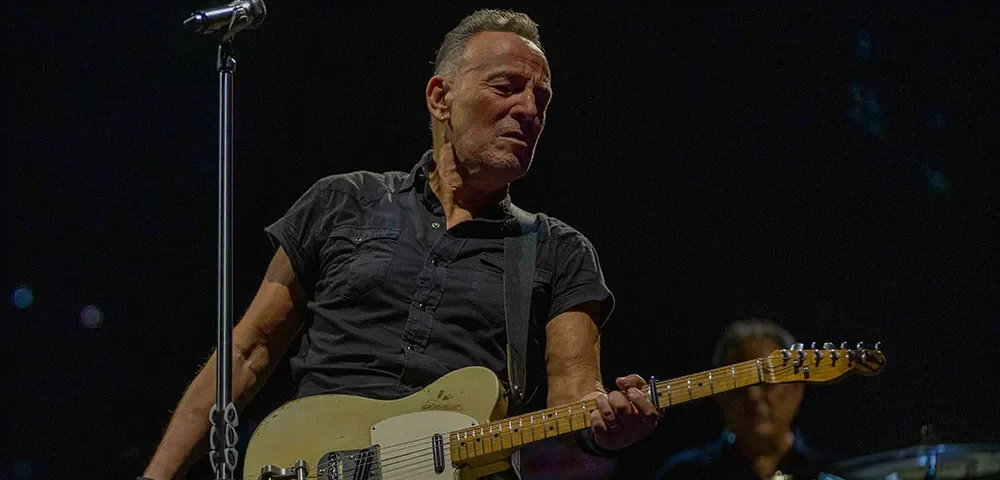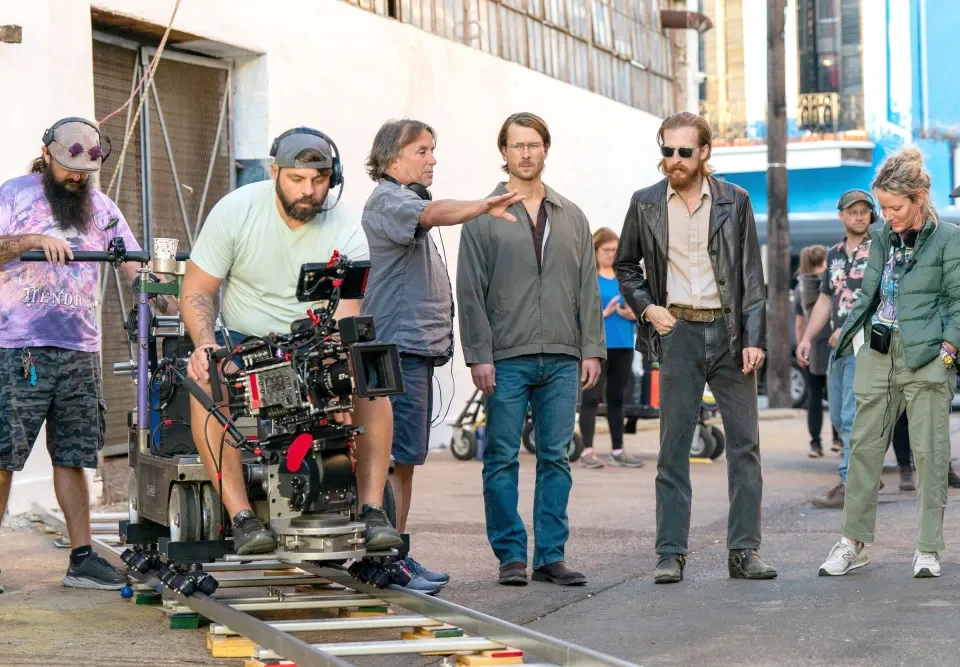
Bring Them Down’ Review: A Blood-Soaked Irish Drama That Lays Low Its Feuding Characters
09/10/2024
Ho Wi Ding Shooting ‘Mothernet,’ AI Cautionary Tale From Indonesia, Singapore
09/10/2024According To The variety When Bruce Springsteen stands onstage, staring out at the crowd, or with his head bowed, and cocks his guitar behind him, that pose is now as iconic as that of the young Abraham Lincoln holding an ax over his shoulder. It’s a mythic image of American nobility. In “Road Diary: Bruce Springsteen and the E Street Band,” we follow Springsteen, in his first concerts since the pandemic, as he reconnects with his fabled band and they rehearse for six days and go out on a tour that will take them from the U.S. to Europe, from 2023 to 2024.
All of this is intercut with grainy footage of Bruce performing in the ’70s and early ’80s. At this point, we’re so accustomed to the older, statelier Bruce that when we see some of the earlier clips, it’s almost shocking to register just how much he moved around onstage. He bopped in a way that was crazy and flamboyant. It’s pointed out in the documentary that the key reason he originally recruited his buddy Steven Van Zandt to be the band’s guitarist was so that he — Bruce — could liberate himself from holding a guitar. That’s how much Bruce, in his heyday, liked to dance.
Bruce doesn’t move like that anymore. But at 74, he’s the picture of hard-won vigor, and the surly beauty of his youth has evolved into a kind of statuesque huskiness. He now resembles Robert De Niro with a touch of Ben Affleck; his face looks, at certain angles, like something you might see on the side of a silver dollar. Yet he’s as stubbornly alive as ever. Now that Springsteen and the E Street Band, the musical blood brothers he has played with for half a century, are in their golden years, the meaning of what they’re doing has changed. They still sound fantastic — crisp and tight and rockin’ and vibrant. Nothing about the E Street Band is weary or wobbly or slow; their sound is ageless. Yet the man fronting them has always had the desire to share the song of himself, and that means that Bruce now sings in a way that’s timeless but that also acknowledges time. There are moments when what he’s singing about is the darkness on the edge of death.
But only moments. What you hear in “Road Diary” is the life force of Springsteen as an artist. He plays a number of new songs, but the fact that he’s been playing the old ones for as long as he has only adds to their layered majesty. I was struck by that when Bruce unleashes the guitar solo in “Prove It All Night,” a song released in 1978. Back then, when you went to a Springsteen show, a lot of the mania — the ecstatic cries of “Bruuuuuce!!!,” the collective reveling in the three-hour-plus immersion — cohered around the feeling that Springsteen was, more or less, the last of the larger-than-life classical rock stars. His music was right down the center of the plate.
Now, when I hear that guitar solo in all its blistering fury, and watch Bruce screwing up his face to play it with maximum intensity, it sounds like what it is: a form that has faded from the center. Yet the solo seems to be saying that as long as Springsteen can take a guitar and make it sound like this, rock ‘n’ roll lives. This is music that erupts right past nostalgia.
“Road Diary” starts with Bruce getting the band back together, and I must say: They’re quite a mutual-admiration society (not that there’s anything wrong with that). They have a sense of drama about honing their sound back to midseason form that seems a tad overstated. True, they haven’t played together for six years. The film’s director, Thom Zimny (who co-directed, with Bruce, the intimate 2019 Springsteen performance documentary “Western Stars”), interviews each of them, and when they talk about how sluggishly paced the songs are at first, we think, “Don’t worry about it. You’ll get up to speed.” There are now rock nostalgia tours in which the bands haven’t played together for 30 years. The E Street Band, even from the “rough” first rehearsals, sound like a spangly well-oiled machine, and they know these songs in their bones. And Bruce, if anything, has only gotten more polished and organized. He irons out a set list, of 25 songs, that add up to a story he’s telling — of the past and the present, of youth and age — that’s as meticulous in its meaning as a novel.
A music doc should certainly celebrate its subject. I’ve never seen one that didn’t. But in “Road Diary,” there’s a whole lot of effusive celebration going on. Bruce talks about how much he loves the band, and how great they all are, and how great the additional members are (the jazz/funk horn section, the soul choir, the percussionist Anthony Almonte), and they all talk about how much they love Bruce, and how miraculous it is that they can all be doing this after 50 years. I don’t doubt a word of it, but the 99-minute movie didn’t need to keep reminding us. Springsteen is too resonant and classy an artist to need a music doc about him to ever feel, in its positivity, like an infomercial, and this one occasionally does.
But you can forgive that. These guys (and girls, notably Springsteen’s wife of 33 years, Patty Scialfa, who reveals in the movie her diagnosis of early-stage multiple myeloma), have earned the right to salute their longevity and the bliss they bring out in each other. Their acknowledgment of the loss of band members Danny Federici and the great Clarence Clemons (who was replaced by his nephew, Jake Clemons, who does a good job but summons maybe half the sound that Clarence did) are stirring and sobering. (Onstage during the tour, Bruce sings the Commodores’ “Night Shift” as a tribute to them. It becomes one of the concert’s showstoppers.)
And their evocation of the perfectionism of the younger Bruce, who would order the band to vamp for several hours as he sound-checked every corner of an arena, tells you a lot about him. So do the stories about the band’s early touring days, or about what it was like to hear Sam and Dave at a club in the early ’60s. More than ever, you hear how much soul DNA is embedded in the E Street Band sound. At the end, Bruce, speaking to us in voiceover, says that he plans to just keep going, to play in concert “until the wheels come off.” Watching “Road Diary,” you hope they never do.




